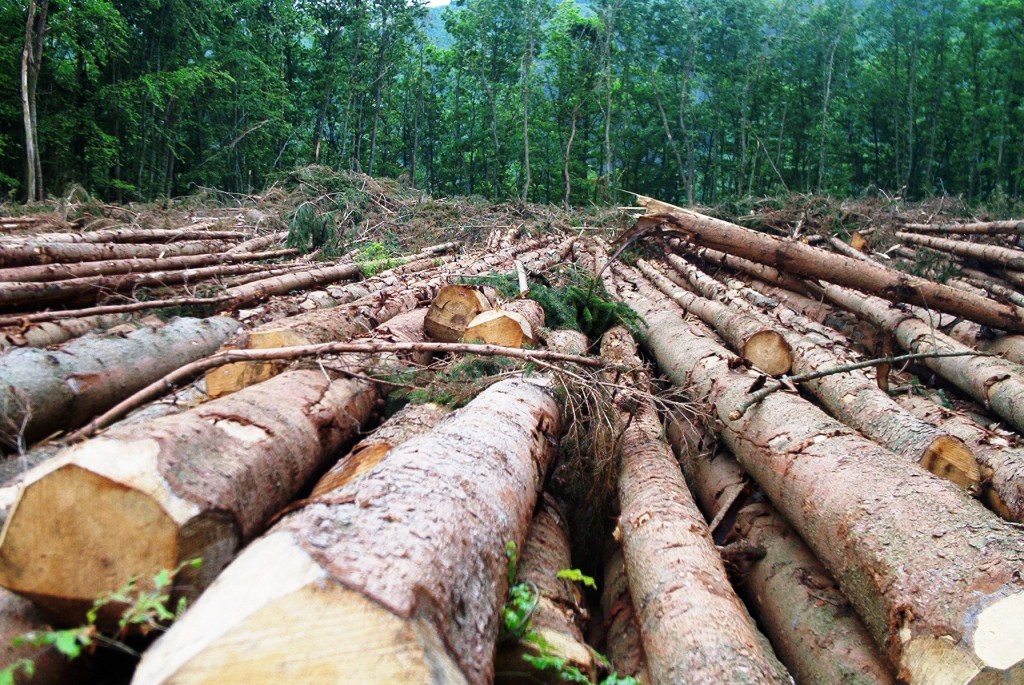In The Overstory: A Novel (W. W. Norton & Co., 2018), author Richard Powers explores the problematic relationship between people and trees. Although humans generally appreciate trees—as material resources and natural ornamentation—we do not fully appreciate their value as part of complex forest ecosystems. This ignorance serves as the seemingly indomitable antagonist in Powers’ work, against which a collection of ill-fated characters fight to preserve the last few acres of virgin woodlands.
The character Patricia Westerford, a scientist who advances the knowledge of the sensory and communicative capacities of trees, takes a particularly heroic stand against this adversary. As a university student taking classes in forestry, Westerford quickly became disillusioned with the traditional model of silviculture, the science of forest management. Denouncing an approach that she believes has benefited resource extraction at the cost of ecological resilience, she questions why forests—which first appeared between 300 and 400 million years ago—would ever require the management of humans? For her, silviculture has facilitated the destruction, not sustenance, of forest ecosystems.
In one scene, Westerford gives testimony during a courtroom trial concerning lumber companies’ logging of old growth forests. After the scientist makes the case for the intrinsic worth of untouched woodlands, the judge inquires: “Young, straight, faster-growing trees aren’t better than older, rotting trees?” To which Westerfeld replies, “Better for us. Not for the forest. In fact, young, managed, homogeneous stands can’t really be called forests.”
In this stark reminder that tree plantations are not forests—sylvan communities that are vanishing at a rapid pace—Powers anticipates the growing environmental conflict concerning the use of wood in building construction. Encouraged by the knowledge that lumber produces lower carbon emissions than steel or concrete, many architects have embraced the pursuit of mass timber construction, which in turn has increased demand for harvested material. Yet this motivation to counter global warming could, if unchecked, result in a different ecological catastrophe.
Deforestation and deficient forest management are responsible for as much as 20 percent of climate change–related emissions according to Jonathan Jelen, old-growth campaign coordinator for Oregon Wild, in a 2009 Scientific American interview. Furthermore, old-growth forests provide countless benefits that we have only begun to quantify—ensuring biodiversity and offering a variety of ecosystem services, for starters. “These areas provide some of the cleanest drinking water in the world, critical salmon and wildlife habitat, world-class recreational opportunities, and critical carbon storage in our fight against global warming,” Jelen said.
Although the term “old growth” remains vague, the U.S. Department of Agriculture Forest Service Pacific Northwest Research Station developed an accepted definition that quantifies the density, number, and age of large trees per unit area as well as other criteria—such as the number of fallen logs and species mix. Such an analysis shows mature forests in decline over time. Currently, less than 6 percent of old growth forest remains in the West, and only 1 percent in the Northeast, according to the National Commission on Science for Sustainable Forestry (NCSSF). Although it is difficult to convey the non-resource-related benefits of mature forests to the general public—a reality The Overstory drives home—one fact remains clear. “Unless some younger forests become older,” the NCSSF report warns, “one day in the future there will be no ‘old growth.’ ”
Nevertheless, our increasing obsession with carbon—and its sequestration—has resulted in an entirely performance-based view of forests. For example, a Jan. 5 article in The Economist critiques the construction industry’s goal of net zero as inadequate, advocating a greater emphasis on the carbon storage potential of materials as opposed to the carbon dioxide associated with building operating energy. This focus on carbon includes a dismissive assessment of old growth forests via a performance lens. “Many mature forests do little to take extra carbon out of the atmosphere,” the article states. “Chopping some of them down, storing the carbon in wooden buildings, and planting new trees in their place could well increase forestry’s contribution towards actually removing carbon from the air.”
Yet this simple accounting is contradicted by forest ecologists. According to San Francisco–based green building consultant Jason Grant in his essay “Seeing the Forests for the Mass Timber” in The New Carbon Architecture (New Society Publishers, 2017), a measurement of the embodied carbon of wood must account for potentially environmentally unfriendly practices of forest management and conservation. “If our main goal is to sequester carbon, one of the best things we can do with forests is to keep them around and let them grow old,” he writes in. “Older forests generally capture and store far more carbon over time than do younger ones. And the oldest forests store the most.”
While our newfound love for mass timber and its carbon banking potential is not misguided, it should be shaped by a different temporal perspective—one based on ecosystem cycles rather than quarterly reports. Wood inherently has an advantage over concrete and steel when it comes to reducing carbon emissions. However, in our rush to build ever-larger buildings with timber, architects’ untempered promotion of wood products could drive industry towards a reckless and unimaginable end. In short, we need to be more mindful of ecological growth than we are of market growth.
“If you want to maximize the net present value of a forest for its current owners and deliver the most wood in the shortest time, then yes: cut the old growth and plant straight-rowed replacement plantations, which you’ll be able to harvest a few more times,” Dr. Westerford tells to the judge in The Overstory. “But if you want next century’s soil, if you want pure water, if you want variety and health, if you want stabilizers and services we can’t even measure, then be patient and let the forest give slowly.”
This article originally appeared on Architect.
Blaine Brownell, AIA, is a regularly featured columnist whose stories appear on this website twice a month. His views and conclusions are not necessarily those of ARCHITECT magazine nor of the American Institute of Architects.



